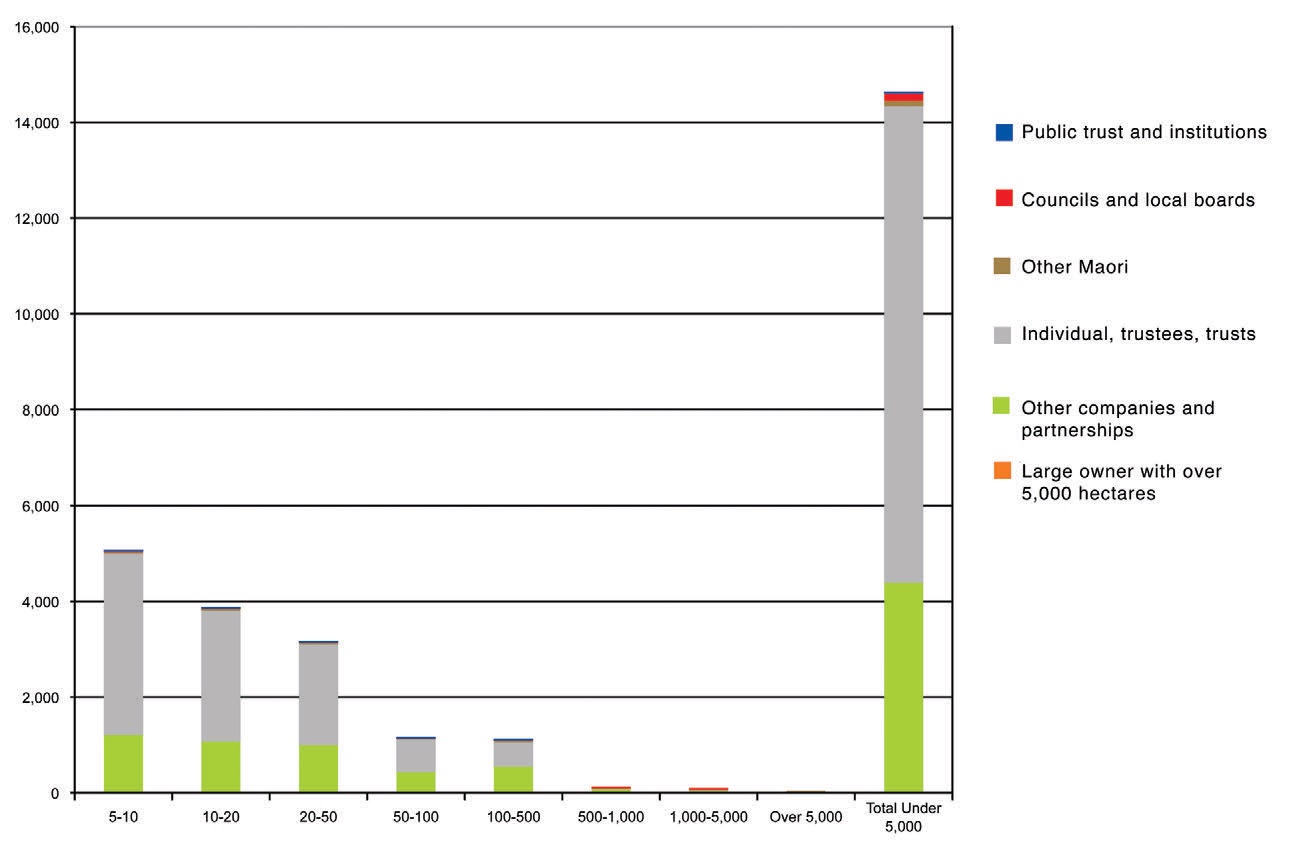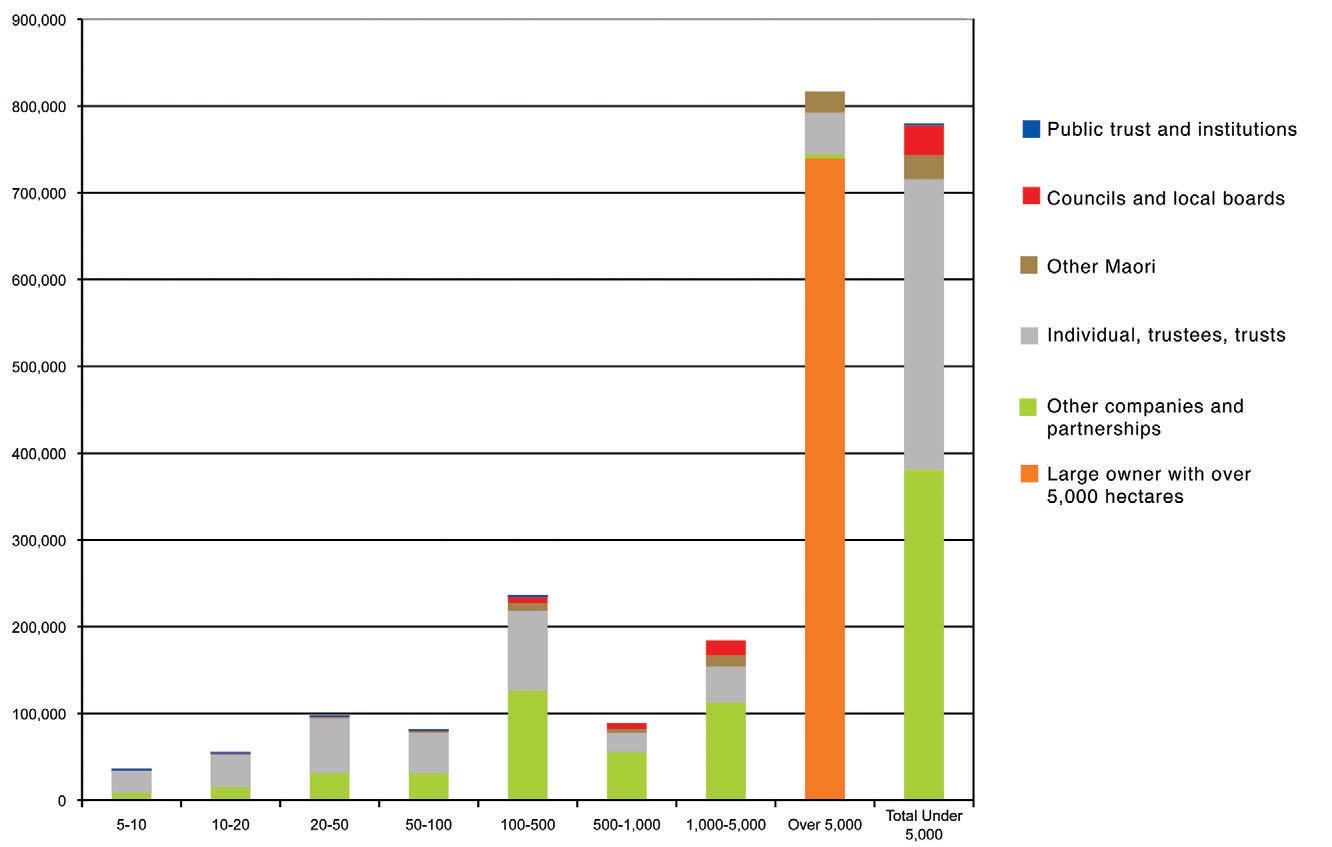Standing up for the small-scale grower
Roger May, New Zealand Tree Grower February 2013.
Since the mid-1980s when the government sold most of the taxpayer-owned forest plantations and placed most of Crown-owned indigenous forest into the Department of Conservation, the New Zealand forest industry has been dominated by the larger exotic plantation companies. Most of their estates are radiata pine and they are well represented by the NZ Forest Owners Association.
Since then, the NZFFA and a few smaller groups have been the only voices representing the small-scale forest growers. Radiata pine is the dominant species grown by farm foresters but many also grow alternative and special purpose species. With a current membership of about 2,500, the NZFFA has served these growers well, but membership numbers and resources are constraints. Unlike similar organisations overseas, the NZFFA has not evolved to provide a framework for cooperative marketing. There have been odd instances of this occurring at branch level, but it is only recently that steps been taken to develop a marketing desk.
Finding owners
Recently, the Wellington branch of NZFFA obtained funding from the MPI Sustainable Farming Fund to carry out a study to identify unaffiliated forest owners. These were growers who were not members of the Forest Owners Association or the NZFFA. Originally this project was to focus on the southern North Island. The initial motive was to identify and contact those owners who would be likely to contribute to the wall of wood expected in the 2020s, with a view to coordinating the expected wood flows and improving the stability of prices and revenues back to those growers.
At the same time the Forest Owners Association was preparing proposals and doing the groundwork for introducing a plantation timber levy under the Commodity Levies Act 1990. The basic idea of a levy is for growers to fund an organisation which then works to advance the interests of all levy payers. Within the limits and requirements set by the Act, the payment of the levy would be mandatory for all producers.
Another 14,700
As a result of the levy proposals, the NZFFA realised that it would be prudent, if not critical, to identify all unaffiliated plantation owners, not just those in the southern North Island. The reason for this was two-fold:
- All these plantation owners would need to be contacted and invited to vote on whether a levy should be introduced;
- All of them would be required to pay the levy if it was introduced.The NZFFA could also see that a list of all plantation owners could be useful in identifying potential members nationwide.
Therefore, the original SFF-funded Wellington branch project was modified to cover the entire country while still allowing the branch to carry out its analysis to gauge and coordinate regional wood flows. Technical assistance was sought and two GIS mapping experts in Nelson and Auckland were used to run the analysis, all based on publicly available data. The objective was to identify all New Zealand plantation owners with five hectares or more of tress and to obtain their contact or postal addresses.
The end result was that about 14,700 plantation owners were identified, representing almost 1.6 million hectares of plantations. The analysis excluded plantation growing on Crown land and managed under Crown Forest Licences. Of these 14,700 owners, approximately half have validated postal addresses. The Wellington branch is now developing a system for obtaining and validating contact addresses for the remainder.
| Entity | Number | Hectares |
|---|---|---|
| Owners with over 5,000 hectares | 45 | 816,798 |
| Other partnerships and companies | 4,393 | 380,989 |
| Individuals, trustees and trusts | 9,937 | 334,498 |
| Other Maori | 118 | 27,959 |
| Councils and local boards | 172 | 35,137 |
| Public trusts and institutions | 18 | 1,346 |
| All others with under 5,000 hectares | 14,638 | 779,929 |
| Total | 14,683 | 1,596,727 |
The overall analysis found 20 different types of ownership together with the plantation area and number in each ownership category. These have been aggregated into six general types – as shown in the table.
The analysis also allowed summaries to be produced based on eight categories of plantation area. The first chart on the next page shows the number of plantation owners in each of these eight categories and also shows the total numbers under and over 5,000 hectares.
The second chart shows the area of plantation owned in the eight area categories and also shows the total area under and over 5,000 hectares.
A number of important points become apparent from this analysis:
- There are a lot more small-scale plantation owners in New Zealand than is commonly known.
- There are about 12,000 plantation owners who are not directly represented by any forest industry organisation. These owners have, to some extent, benefited from the activities of the NZFOA and the NZFFA over the years at little or no cost.
- There will be thousands more plantation owners who have less than five hectares who have not been found in this analysis.
- There are about 45 large plantation owners managing about 816,800 hectares of plantation.
- There are about 14,600 other plantation owners collectively managing about 780,000 hectares of plantation.
- 51 percent of New Zealand’s plantation is managed by 0.3 percent of the plantation owners with five hectares or more.
- 49 percent of New Zealand’s plantation is managed by 99.7 percent of the plantation owners with five hectares or more.


The proposed levy
There are good grounds for introducing a levy and, depending on the thresholds and mechanisms used, it would affect all these plantation growers sooner or later. A levy system has the potential to strengthen the overall industry by providing a common forum for debate on the full range of forestry matters. It would also provide a basis for channelling resources into actions and projects which reflect and balance the collective or sub-sector needs and interests of all levy payers.
The first step in the process of introducing a levy is a requirement for a ‘body corporate’ to be formed and for a plan to be written showing the Minister how the levy would be collected and spent in the first year. Besides writing a plan, this organisation will also be required to have rules which specify what the organisation is to do and how things are to be done. These rules − the constitution − will dictate how effectively it is able to reflect and balance the needs and interests of all levy payers. The graphs provide some insight on how those needs and interests should be reflected, balanced and represented.
Invite every owner to vote
The second major step is for this organisation to identify all potentially affected plantation owners and invite them to vote in a referendum on whether or not a levy should be introduced. More than half of all those voting in the referendum must support the levy before the levy system can be finalised and levies imposed.
It should be noted that the Commodity Levies Act requires that voting in this referendum be conducted on the basis of − commodity production, commodity value, area in production or some other related quantity. It is understood that the NZFOA is proposing a levy based on production in tonnes of logs. However, given the long lead times for forestry and the non-annual production for many growers, some have suggested that a combined area and production-based levy would provide the widest participation and the most stable revenue flow.
In terms of the proposed levy, it is important that −
- The basis of the levy is given more careful consideration;
- As many plantation owners as possible, potential levy payers, are identified by the organising body, contacted and provided with all relevant information about the proposed levy system;
- All these owners are invited and encouraged to vote in the referendum;
- These owners clearly understand the rules governing the organisation and the levy system to ensure that there are sufficient and explicit controls regarding representation, elections, levy collection and decision-making on spending levy monies including administration costs;
- All these owners take the time to actually cast their vote;
- Plantation owners ensure the levy organisation keeps them regularly updated on the development and administration of the levy system, the organisation’s plans and decisions as well as any constitutional changes; and
- All owners are prepared to take an active interest in the organisation to ensure it is fair, effective and efficient. Apart from matters relating to the proposed levy system, the figures obtained also provide the NZFFA with information which could broaden its membership, and enhance and develop services to members.

 Farm Forestry New Zealand
Farm Forestry New Zealand

